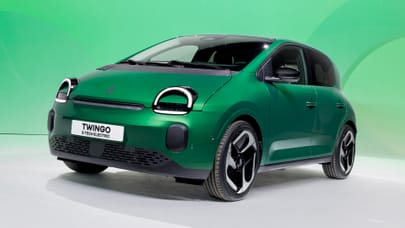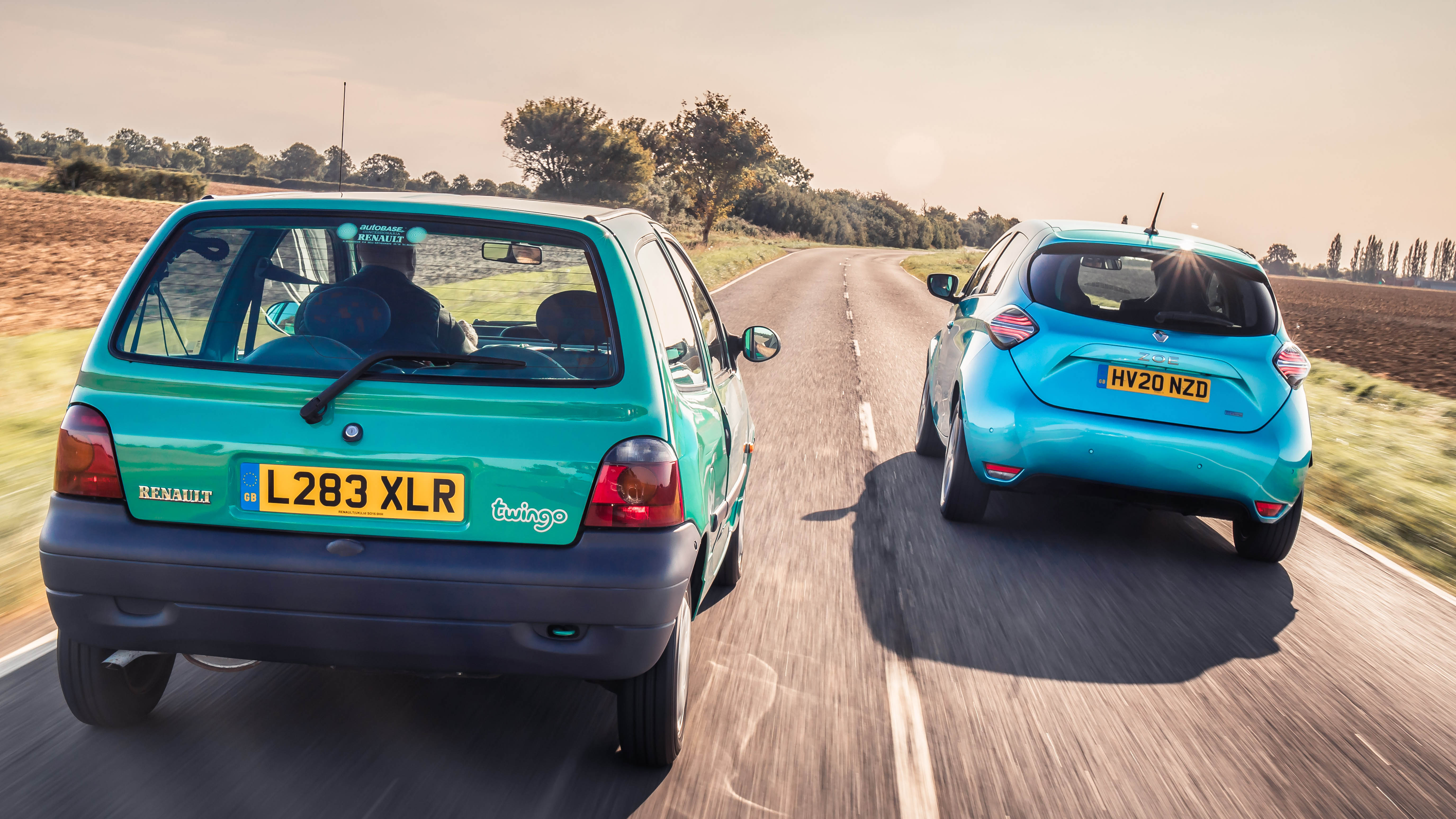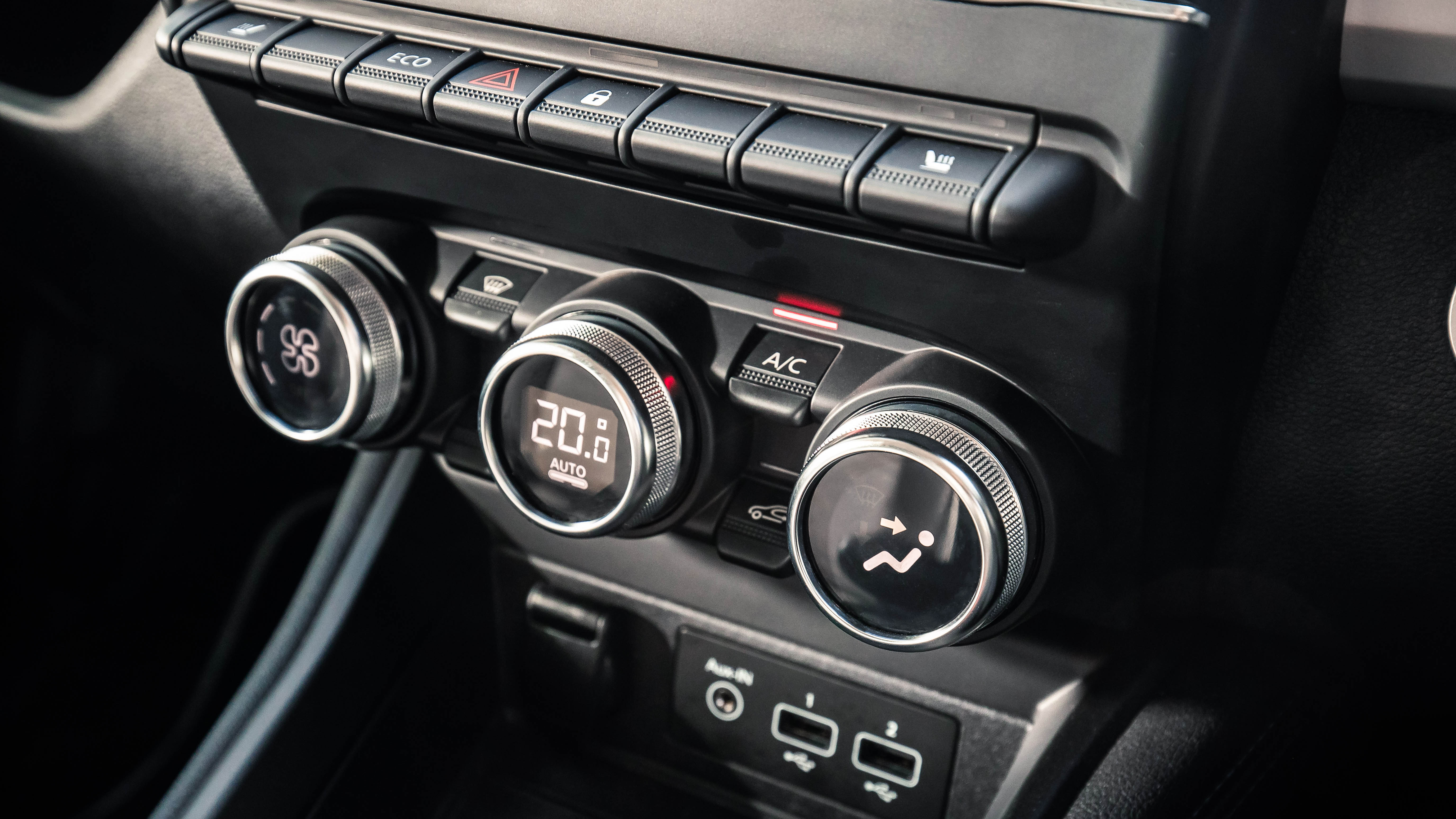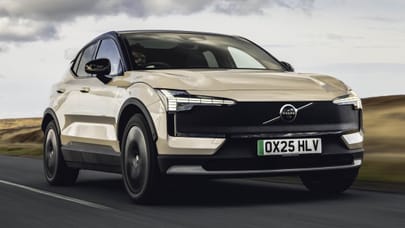
Progress report: Renault Twingo vs Renault Zoe
We know the French make fantastic city cars, but how's the recipe changed in 30 years?
Look at that smiling little Twingo! C’est bon?
Oui, très bon. We’ll stop with the excruciating GCSE French, though. Essentially, we’re here to pore over the recipe for what makes a great city car, and to understand just how that recipe has changed for Renault over the past three decades.
Clearly, the first step of said recipe is to come up with a cute and likeable name. Back in 1992, Renault used an amalgamation of twist, swing and tango to come up with the really rather lovely Twingo. Oh, and just in case you were questioning the success of the Mk1, given that only a handful of imports snuck into the UK (one of which you see here)... Renault sold over 2.6 million and, although production ended in 2007 in Europe, it was built right up until June 2012 in South America.
Handily, December of that exact same year also marked the arrival of the first-generation Zoe. How mad is that? Renault stuck with the aforementioned naming strategy too, and after reading ‘Best Baby Names 2011’ from cover to cover it landed on Zoe – the same tag it had given to a supermini concept back in 2005.
What else made the original Twingo so popular then?
Believe it or not, when the Twingo first hit the floor of the 1992 Paris Motor Show it was considered a radical piece of design. Inspired by the one-box Espace people carrier, it had a similar objective of maximising the space available to its four occupants. In fact, one of the major selling points was that its rear bench slid backwards and the front seats fully reclined, thus creating a makeshift double bed. Handy after one too many vinos at your favourite Parisian haunt.
It was simple too. And, crucially, a cracking bit of fun. At launch it was offered with an array of Nineties-spec primary colour options, as well as a two-spoke steering wheel, outlandish upholstery design and pastel-coloured interior plastics.
This here is a ’94 example looking resplendent in weathered green. It’s fitted with optional electric windows – we know, luxury – and it goes well with a little 1.2-litre four-cylinder and five-speed manual shifting around 800kilos. There’s no power steering and no rev counter either, but the omission of both helps with the no frills nature and there’s no trouble keeping up with modern-day traffic. You’d just have slightly bulkier arms from all the parallel parking.
Does the Renault Zoe deliver on the same fronts?
If we’re honest, probably not. That’s not to say we don’t love it here at Top Gear – we’ve given it gongs including Best Supermini in our Electric Awards and even City Car of the Year at the 2019 TopGear.com awards. As well as having a decent-sized boot and pleasant driving dynamics, this new 52kWh version gets a mightily impressive 245 miles of all-electric range. That’s a huge amount more than its rivals.
Top Gear
Newsletter
Thank you for subscribing to our newsletter. Look out for your regular round-up of news, reviews and offers in your inbox.
Get all the latest news, reviews and exclusives, direct to your inbox.
It’s obviously kind to the environment too. So, where’s it lacking?
Well, in this company the Zoe comes across as a little too serious for its own good. The interior trim is functional but dour, the looks are modern but a touch too aggressive (beside the cute Twingo, at least) and it’s well refined but uneventful behind the wheel. Plus, frankly it’s flipping massive compared to the Twingo and one can’t even recline to sleep in full comfort. Someone help Renault dig out that old recipe book.
Photography: Jonny Fleetwood
Trending this week
- Long Term Review
How efficient is the hybrid Dacia Bigster?
- Top Gear magazine
Here are 40 brilliant cars from 400 issues of Top Gear magazine










